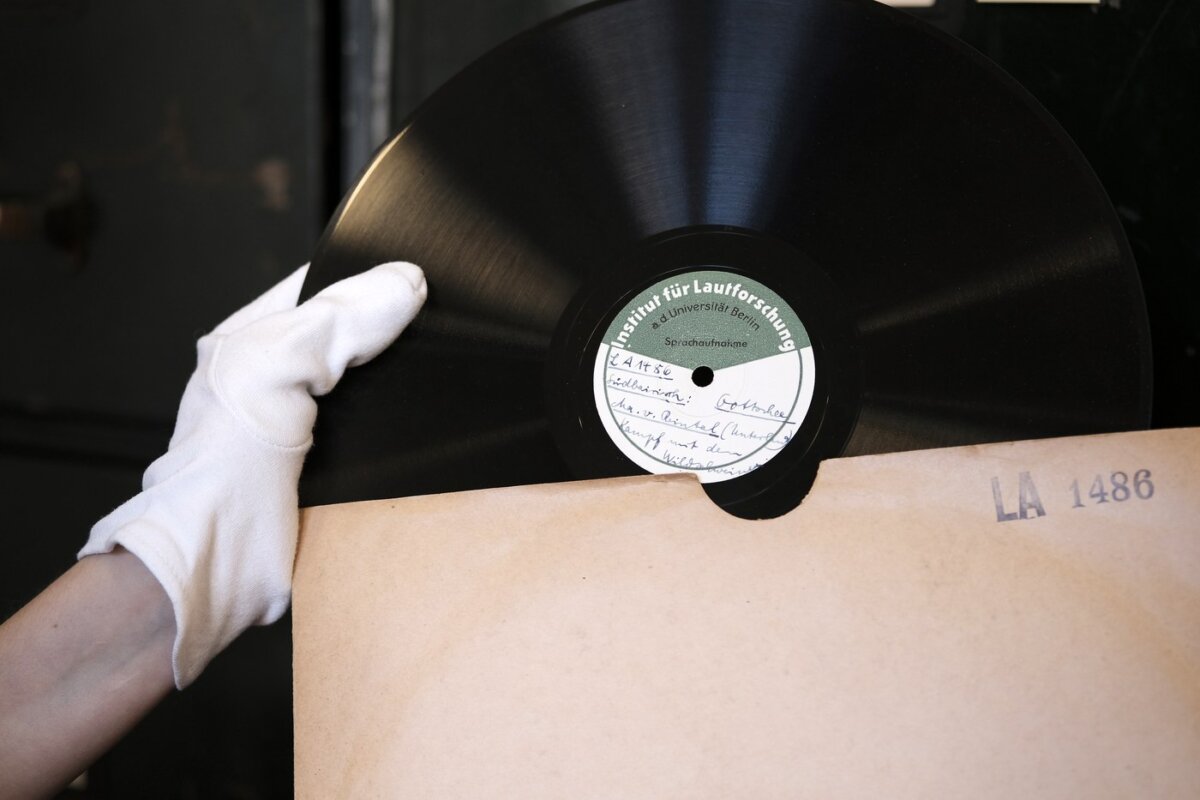Historic dialect recordings from the Sound Archives will be available to hear at the Humboldt Forum
The University’s inaugural exhibition at the Humboldt Forum will focus on a collection that has hitherto enjoyed scant attention: the historic dialect collection of the . It was created by Wilhelm Doegen, the founder of the Sound Archives, in the 1920s to 1940s and has been in the University’s possession since 1934. Currently undergoing intensive scientific work, after relocation to the former City Palace building it will be available for scientific use.
The 730 German dialect recordings and recordings of closely related Frisian and Low German were made at central locations in the regions in question with a gramophone and shellac records, which in those days was a spectacular new method of linguistic research. They are currently being transcribed and translated because visitors would otherwise be unlikely to understand most of the dialects. In addition, the dialects have changed so much over the decades that even dialect speakers find the recordings hard to understand.
An interesting discovery was around 130 recordings made in German “language islands” in Europe, some of which no longer exist. They are not only the oldest but also often the only surviving recordings of individual varieties of spoken German. The dialect recordings in the Berlin Sound Archives are especially valuable against this background too.
In the first half of the twentieth century dialectology was closely associated with ethnology and was not just scientifically motivated. In the course of the drawing of borders by the Treaty of Versailles it served political purposes and was used “to identify historic German cultural landscapes and settlement areas (…) in order to provide a quasi-scientific legitimation for demands for border revisions,” as the historian Rainer Schulze puts it in his “The Ethnic Germans in Poland, France, Hungary and Czechoslovakia: Myth and Reality”.
In their day there were several major research projects on German-speaking cultural regions. The largest, launched in 1920, worked on the “Atlas of German Ethnology” and from 1928 had its central office in Berlin’s former City Palace. The Atlas also documented “German customs and habits” beyond the borders of the German Empire.
Parts of the dialect collection were created jointly with linguists engaged in another major atlas project: the “Language Atlas of the German Empire” (later renamed “German Language Atlas”), founded in 1876 by the linguist Georg Wenker in Marburg. That is why many copies of recordings from the Berlin collection are also to be found in the Deutscher Sprachatlas Research Centre at the University of Marburg. Records having been collated, losses were due to be reciprocally offset in 2019.
For the Berlin exhibition over 100 Swiss German dialect recordings from the Phonogram Archive of the University of Zurich (PAZ) will be available. The Berlin Sound Archives conducted joint recordings with the PAZ from 1924 to 1929. For the exhibition the PAZ is proving all transcriptions that have not yet been available in Berlin.
The Sound Archives’ dialect collection was the work of a network of specialists in linguistics and ethnology and innovative recording techniques. About 90 years later it is now being partly reactivated and extended to open up the collection. The linguist Heike Wiese, who has taught and researched at the Humboldt-Universität since April 2020, covers the entire range, from historic dialect recordings to current and especially vibrant urban contact dialects like “Kiezdeutsch”. She deals partly with how new language variants take shape and how versatile and changeable the German language always was and still is. “A language doesn’t stop changing until it is no longer spoken.” In the exhibition her research will be both visible and audible at video and audio stations and in a photo project on urban language graffiti.
